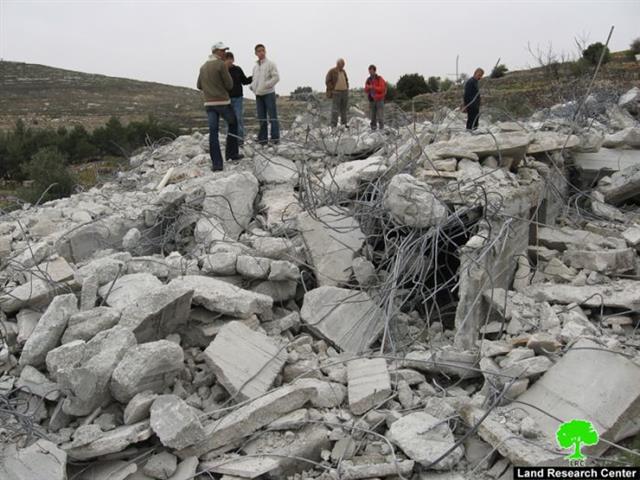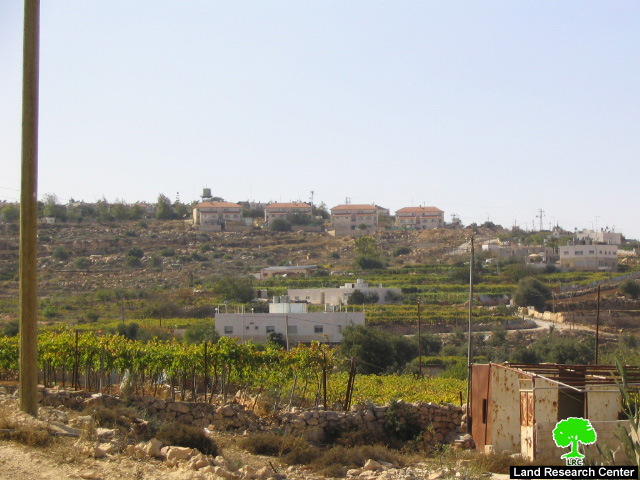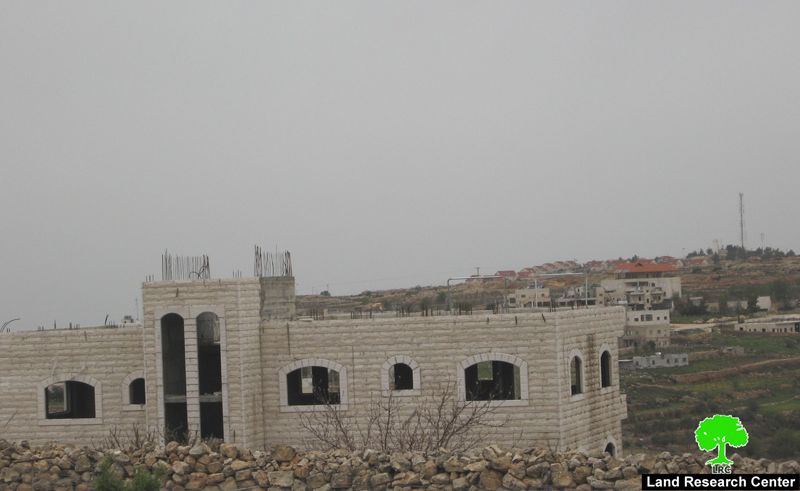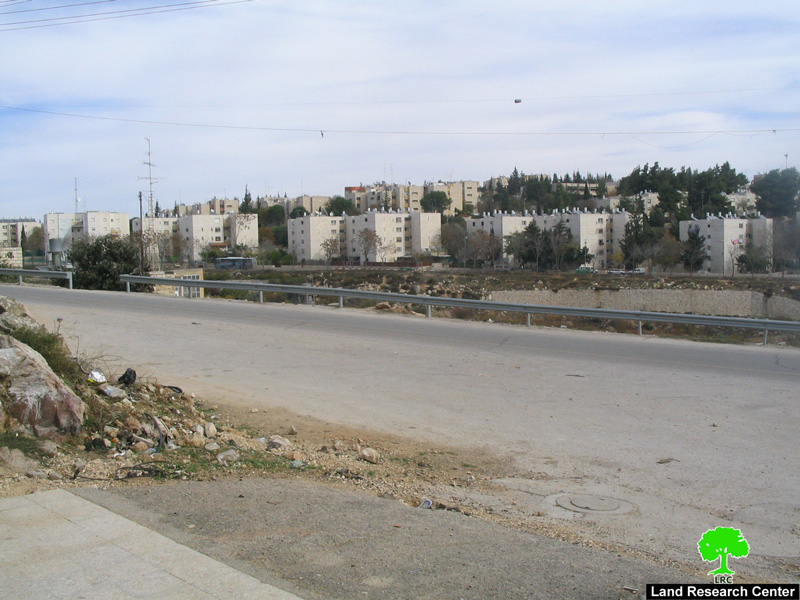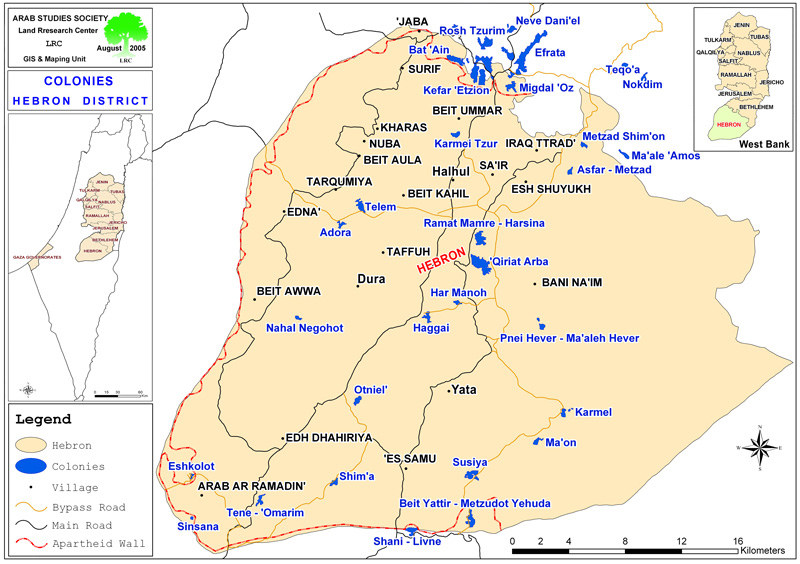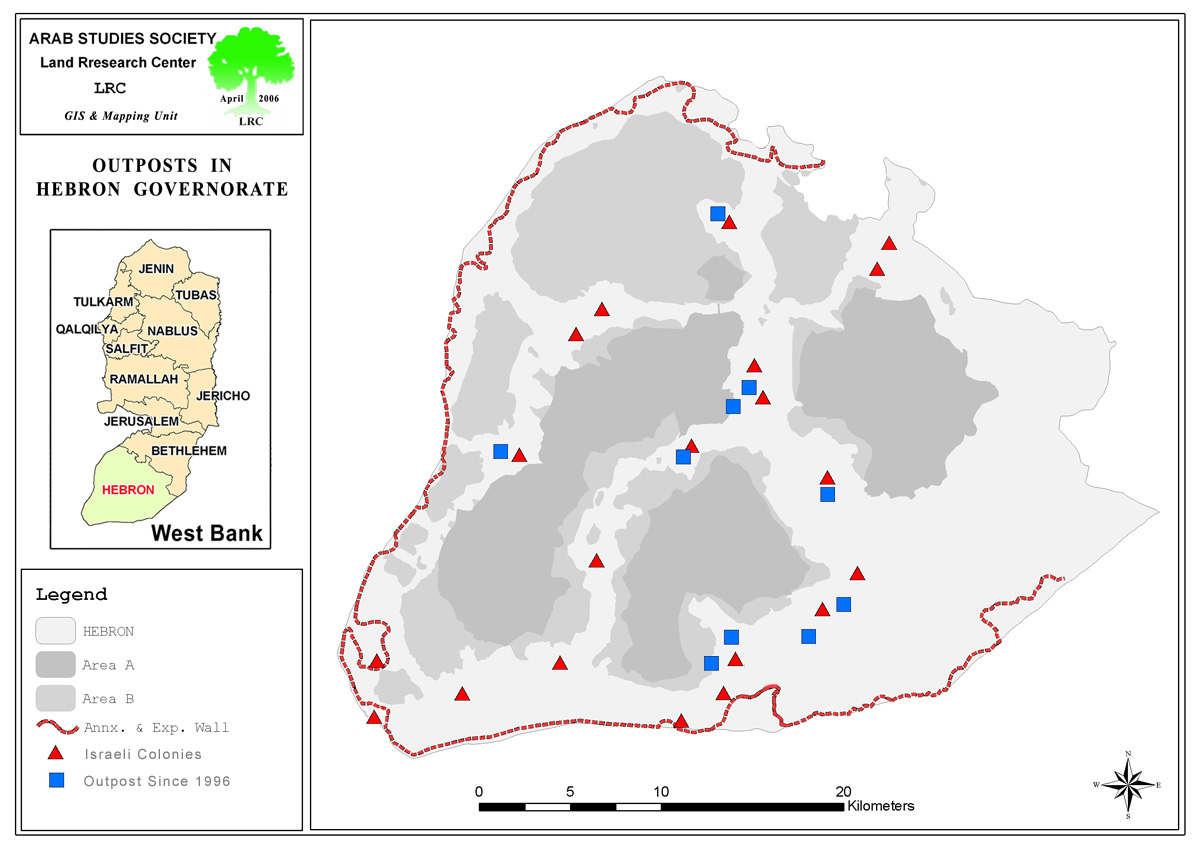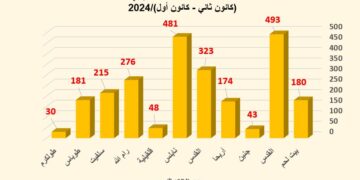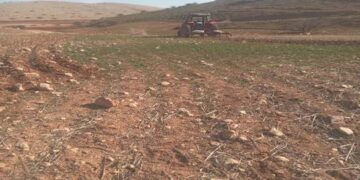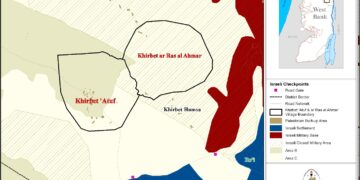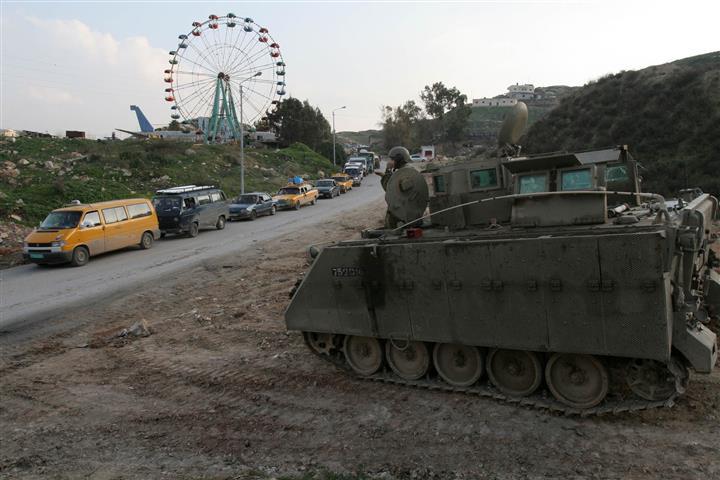
(Photo 1: Bani Na'im, Hebron: Palestinian farmers trying to
extinguish fires in their lands near Pene Hever colony)
Arson attacks, aggressions and seizure attempts are continued against Palestinian trees and lands in Hebron district at the hands of Israeli settlers. The following is a profile of the most recent violations in this regards:
1. On June 23rd, 2007, the Tel ar Rumaida ( Ramat Yashai colony in Hebron's old city) settlers set fire to 7 dunums of olive and almond trees belonging to the Hebronite Abu Haiykal's family. The Hebron municipality fire brigades rushed to the scene and managed to extinguish the fire which caused the damage of a dozen trees. Abu Haiykal's family lives near the colony and faces daily attacks on humans and property. See Photo 2
2. On June 25th, 2007, settlers of Kharsina ( Kiriyat Mamre) colony which is located at the northern edge to Kiriyat Arba' started to pour sewage water at about 16 dunums of vineyard. The polluted land which belongs to Mr. Abdul Hafiz Maswadi is situated in Ein Bani Salim area. The whole vineyard has been damaged by the sewage and the owner has already lost the season. Similar previous attacks were carried out against this particular land causing heavy material and ecological damage.
(Photo 3: Ein Bani Salim, Hebron: Kharsina colony houses above Palestinian houses )
3. On July 16th , 2007, Israeli settlers from Otni'el colony in south Hebron cut olive trees in the village of Rabud. The tree cutting in this area aims at expropriating about 30 dunums of land for the purpose of expanding a colonial post that was erected two years after the establishment of Otni'el in 1983. The 30 dunums are only part of a strip of land at the length of half km long with a total area of 250 dunums located between Otni'el and the colonial post, This strip of land has become a target for expropriation and settlement expansion in order to get the two colonies connected. The land belongs to the families of Abu Sheikha and Al Muqima from Karma village in Yatta region. The newly confiscated lands were surrounded with fences, lights and watch towers manned by the Israeli occupation army. The land confiscation was only the last form of a long series of violations against the owners and their lands so as to force them out of the area under official army protection.
4. On July 18th, 2007, an Israeli settler from Pene Hever (Ma'ale Hever) colony to the south east of Hebron city set fire to more than 550 olive trees at the age of 5 – 15 years. Land owners in Bani Na'im village told LRC field worker that the arsonist's name is Abraham from Pene Hever and he became very well known to them after he had carried out many similar attacks in the past years. His name was given to the Israeli police, but no action has been taken yet. The attacked trees are located in Al Hamra area at the distance of one km to the east of the colony.
(Photo 4: Bani Na'im, Hebron: Palestinian land owners try to
defend their lands threatened by Pene Hever colony above)
Farmer Ali Qaserm Manasra told LRC field worker that dozens of dunums have been burnt by this deliberate attack and fires reached the colony edge forcing the Israeli fire brigades to intervene, but only to extinguish the flames that were approaching the colony and doing nothing to the fires that were destroying the Palestinian trees. Amongst the victimized farmers are the following:
1. Brothers Al. Hussein and Mohammed Manasra
2. Mr. Ali Mohammed Musa.
3. Mr. Ibrahim Ali Haj.
Ever since the establishment of the colony in 1982, Israeli settlers have been trying to seize as much land as possible by terrorizing owners, limiting access to agricultural land and pastures as well as destroying trees and crops.
5. On August 17th, 2007, Israeli settlers from Kiriayt Arba' renewed their attempts to seize a 5-dunum piece of land belonging to the family of Mr. Abdul karim Ibrahim Al Ja'bari, 50 years old, from Hebron. The target land is located about 40 meters from the colony's main gate and a 100 meters from the family house. Local eyewitnesses told LRC field worker that more than 200 settlers of different ages, some armed with automatic rifles, pitched a tent and re-settled in the land under the sight of the Israeli soldiers manning a nearby watch tower. Mr. Al Ja'bari said the settlers' return came only two months after a physical attack against him and his son, Ala', 20 years old, whilst they were taking care of their lands with the accompany of international solidarity group personnel. He confirmed that the settlers of Kiriayt Arba' have prevented him and his family from entering their land since five years. He and his son, Ala', are waiting military trial under the pretext of assaulting settlers whilst they were defending them selves two months ago when they exposed to the settlers' attack.
(Photo 5: The colony of Kiriyat Arba' at the eastern edge of Hebron city)
6. On August 20, 2007, the Israeli occupation forces allowed settlers from Susiya colony south of Hebron to continue putting hand over a piece of land that was forcibly planted with grape seedlings a month ago. The army gave the settlers a green line to take care of the seedlings until a final decision is taken by the Israeli supreme court in response to an objection presented by Palestinian land owners.
Palestinian sources in Hebron district told LRC field worker that the so-called Israeli civil administration allowed settlers to keep on seizing about 15 dunums from the lands of brothers Jamil and Talal Hoshiya, from Yatta. This decision is considered a contribution and encouragement on the part of the Israeli occupation authorities to enable settlers to create realities on the ground as a first step towards total confiscation of the land.
Israeli colonies in Hebron district
There are 23 settlements in Hebron Governorate whose built up area is 3.7 km2 (about 0.4% of the total area of Hebron Governorate) as illustrated by the attached map. This number doesn't include the municipal area estimated at 39.9 km2 (3.7% of the total area of Hebron district). The over all number of built up area and municipal area is 43.6 km2 (4.1% of the total area of the district) –Source- Foundation for Middle East Peace, Washington- Settlement Report, June, 2006.
These settlements are distributed along three nearly parallel lines, in addition to the existence of a settlement belt at the southern section of the Governorate. The settlement of Kiryat Arba and its northern neighborhood, Kharsina (Ramat Mamre), are the largest settlements in the Governorate with a total population of 7000 extremist settlers. As for the total settler population in the Governorate of Hebron it reached about 15,000.
Most of the Israeli settlements in Hebron have been established during the early eighties except for the settlement of Kiryat Arba which was established in 1968. The rest of the settlements were established after the signing of the 1979 peace treaty between Egypt and Israel. See Map 1
Table 1: Israeli colonies and outposts in Hebron district
|
No. |
Settlement |
Outpost |
Location (vis-a-vie Hebron City) |
Date of Est. |
2004 Population Census |
Built up area Dunum |
Municipal area dunum |
|
1 |
Adora |
|
Northwestern |
1983 |
186 |
159 |
207 |
|
2 |
|
Ashal |
Few kilometers to the north of Mezadot Yehuda south of Hebron |
NA |
10 |
NA |
NA |
|
3 |
Asfar (Metzad) |
|
Northeastern |
1984 |
275 |
178 |
733 |
|
4 |
Metzad Shim'on |
|
Northeastern |
NA |
NA |
NA |
NA |
|
5 |
Eshkelot |
|
Southwestern |
1982 |
231 |
133 |
6997 |
|
6 |
|
Giva't Abigal |
2.5 kilometers to the south of Ma'on south of Hebron |
NA |
5 |
NA |
NA |
|
7 |
|
Hazon David |
East (close to Kiryat Arba') |
|
NA |
NA |
NA |
|
8 |
Hagai |
|
South |
1984 |
429 |
233 |
872 |
|
9 |
|
Hagai south |
South |
|
NA |
NA |
NA |
|
10 |
Karme Zur |
|
North |
1984 |
665 |
160 |
226 |
|
11 |
|
Karme Zur South |
300 m to the south west of Karme Zur settlement |
NA |
NA |
NA |
NA |
|
12 |
Karmel |
|
Southeastern |
1981 |
319 |
177 |
1758 |
|
13-14 |
Kiriyat Arab' and Kharsina (Ramat Mamre) |
|
East |
1972 |
6651 |
882 |
4047 |
|
15 |
Ma'on |
|
Southeastern |
1981 |
308 |
173 |
393 |
|
16 |
|
Ma'on Farm |
1.0 kilometers to the east of Ma'on south of Hebron |
|
5 |
NA |
NA |
|
17 |
Mezadot Yehuda ( Beit Yattir) |
|
South |
1980 |
425 |
170 |
2817 |
|
18 |
|
Har Manuh |
Southern tip of the City of Hebron |
NA |
NA |
NA |
NA |
|
19 |
Negohut |
|
South west |
1982 |
135 |
90 |
90 |
|
20 |
|
Mitzpe Lackish |
west |
NA |
NA |
NA |
NA |
|
21 |
Otne'il |
|
Southwestern |
1983 |
692 |
291 |
631 |
|
22 |
Pene Hever ( Ma'ale Hever) |
|
Southeastern |
1982 |
377 |
110 |
359 |
|
23 |
|
Pene Hever south |
South west of Pene Hever |
2006 |
NA |
NA |
NA |
|
24 |
Shani |
|
South |
1989 |
500 |
30 |
195 |
|
25 |
Shim'a |
|
Southwestern |
1985 |
344 |
212 |
10597 |
|
26 |
Suseya |
|
Southeastern |
1983 |
663 |
352 |
1546 |
|
27 |
|
Sansana |
Southwestern |
NA |
NA |
NA |
NA |
|
28 |
Telem |
|
Northwestern |
1981 |
141 |
117 |
201 |
|
29 |
Tene ( Ma'ale Omarim) |
|
Southwestern |
1983 |
538 |
272 |
8269 |
|
30 |
|
Yattir south |
West of Mezadot Yehuda south of Hebron |
NA |
NA |
NA |
NA |
|
31-34 |
4 colonial nuclei inside Hebron city: 1. Tel Ar Rumayda 2. Beit Hadasa 3. Beit Romano 4. Abraham Avino |
|
The heart of the City of Hebron |
Starting in 1968 |
600 |
NA |
NA |
|
TOTAL |
|
13848 |
3739 |
39938 |
|||
Source: Foundation for Middle East Peace
In addition, there are 10 settlement outposts established since 1996 after the former Israeli prime minister Ariel Sharon called upon settlers to occupy hilltops and put caravans atop them before ' losing them to Palestinians in negotiations' and in an effort to expand the existing settlements and force new facts on the ground. See Map 2
Related case studies:
1. Israeli settlers continue their fierce war against Palestinian olive tree, the case of Yata- Hebron January, 2006.
2. A profile of Settlers' aggressions against Palestinian people and land in the southern part of Hebron Governorate during the month of September, 2006, October, 2006.
Prepared by
The Land Research Center
LRC


